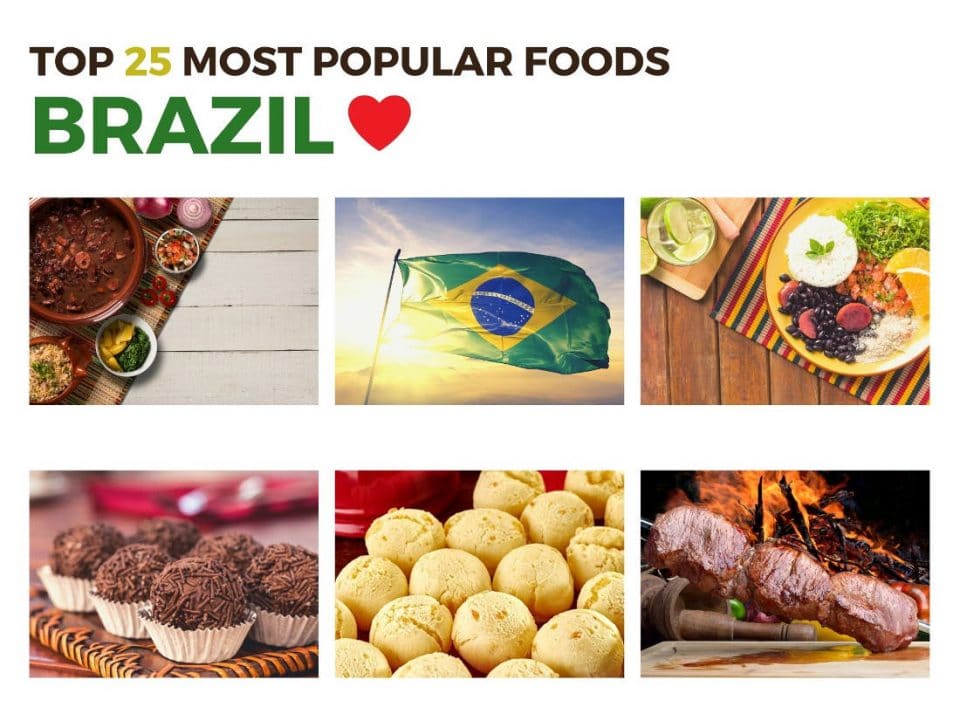Best 26 Brazilian Dessert Recipes to Try Out

Having a diverse heritage and very fertile land, Brazilians have created a fantastic range of delicious desserts to suit every taste. These can use tropical fruits such as the cupuaçu and buriti,and of course, bananas. You’ll also find maize, peanuts, and other local ingredients used to create unique Brazilian desserts for every craving and occasion.
1. Brigadeiro

Hands down the most popular dessert in Brazil. You might get away with having a birthday party without a cake, but if there aren’t enough brigadeiros to fill the table, your guests might well end up leaving early.
The brigadeiro is a very simple Brazilian bonbon, about the size of a golf ball. It is made from condensed milk, chocolate powder, and a fair amount of butter. The secret for the perfect brigadeiro is to stir the mixture non stop over a low heat for about 30 minutes, until it can be rolled up into a small sphere which you then cover in chocolate sprinkles.
When done well, the brigadeiro is very sweet; but not so sweet that you can only take tiny bites of it. Made with surgical perfection, the best are just sugary enough for you to enjoy dozens of them before you finally realize it might be a good idea to stop. Maybe after one… last… bite…
2. Quindim

Quindim was originally a Portuguese recipe that was adopted and improved by the Brazilians. It is a classic sweet that you’ll find at birthday parties, family gatherings, and in nearly every bakery country wide.
Quindim has a soft consistency and is deliciously creamy. This baked dish is made with eggs, sugar, and butter. What makes it distinctly Brazilian, though, is the inclusion of coconut milk and grated coconut.
This grated coconut not only improves the flavor but also gives the mix a bit of crunchiness. It is served in the same fashion as the brigadeiro; small spheres full of sweetness.
3. Goiabada

An exceptionally succulent sweet, this popular dessert is made from melted guava and sugar. The guava gives it real sweetness. It can be made both paste-like or more solid so it can be sliced with a knife.It is popularly served with cheese, which balances the sweetness to create a luscious, yet grown-up, combination.
4. Doce de Leite

Milk and sugar: that’s all you need for the sweetest Brazilian recipe in existence. In the original recipe, from the state of Minas Gerais, the milk is slowly cooked for hours on end, and constantly stirred, until it turns a golden caramel color. It is so excessively sweet that it’s difficult to eat much at once, unless you are especially committed to spiking your blood sugar.
However, doce de leite is so luscious that you’re bound to start craving some if you go for too long without a spoonful or two…
5. Maria Mole

The maria mole is most popular during the “São Cosme and São Damião” (Saint Cosmas and Saint Damian) national holiday.
Originally a Catholic holiday that celebrates the patron saints of twins, it has also been adopted and popularized for the African religious holidays of Candomblé and Umbanda.This is the Brazilian equivalent of the famous American Halloween, where adults distribute packets of candy to children.
While the candies in each package can vary, the traditional maria mole, made of egg white and gelatin, are found in every single one of them, and for an obvious reason: they are every kid’s favorite!
Very sweet and with the consistency of marshmallow, a single bite will tell you why they are so popular.
6. Pamonha

Pamonha is a unique dish that exists only in Brazil. It can be served in savory or sweet versions. Made from fresh grated corn mixed with milk, the dough is molded into a tube and folded into the corn’s husk. Then it is finally ready to be cooked in a water bath (so it doesn’t overheat) until it has a solid but extremely smooth pudding-like consistency.
Today it is common to add more complex fillings, such as sausages or cheese, for an even better flavor!
Pahoma are typically served during the Festa Junina, to celebrate the beginning of winter, but you can buy them throughout the year in any supermarket, usually frozen.
7. Curau de Milho

Curau is a pudding-like sweet made from ripe corn, coconut milk, cinnamon, and sugar. It is traditionally enjoyed during the Festa Junina and is served cold in a cup.
While the ingredients are almost the same as those of its cousin pamonha, it is prepared differently. Instead of being cooked until it’s solid, it is refrigerated as soon as it comes out of the oven, so it retains its smooth, creamy consistency.
This Festa Junina Carau is best enjoyed sitting round a big campfire, playing music and telling stories until either the fire starts to fade or the sun begins to rise.
8. Geléia de Mocotó (Mocotó Jam)

Despite being traditionally called a jam because of the jelly-like consistency of the boiled cartilage, this recipe has no fruit in it.
The main ingredient of the mocotó jam is cow hooves. After boiling the hooves, milk and sugar are added to balance out the strong taste of the dish.
It is often spread like jam on bread and cakes, but the most die hard fans eat it on its own as a dessert.
9. Pé de Moleque

A delicious, surprisingly nutritious dessert, Pé de Moleque is served as a candy. It is made from roasted peanuts mixed with melted brown sugar. The mixture is cooked until it becomes hard as rock, then it is cut into square shaped sweets and sold individually.
Literally translated it is “Brat’s foot”, the origin of the curious name is a bit of a myth. The sweet was extremely popular among kids, so much so that street vendors had to fight off swarms of kids trying to steal it. Tired of this ordeal every single day, the vendors would tell the little darlings to ask for a piece rather than steal it – Pede, moleque! (Ask for it, brat!)
10. Banana Frita (Fried Bananas)

Most popular in the northern region of Brazil, fried bananas are extremely versatile, nutritious, and delicious. Usually served as a dessert, they also make a popular side dish served with any kind of fish.
The bananas can be fried whole or in slices, seasoned with sugar and cinnamon. So incredibly appetizing with a delicious, uniquely tropical flavor.
11. Rapadura

The recipe for rapadura originally came from a method of storing and transporting the massive quantities of sugar that once drove imperial Brazil’s entire economy.
Rapadura is simply unrefined sugarcane juice cooked until it solidifies into a mass of extremely concentrated sweetness.
It quickly became a coveted product in its own right, eaten as a dessert or to give a quick calorie boost during intense physical labor.
12. Mousse de Maracujá (Passion Fruit Mousse)
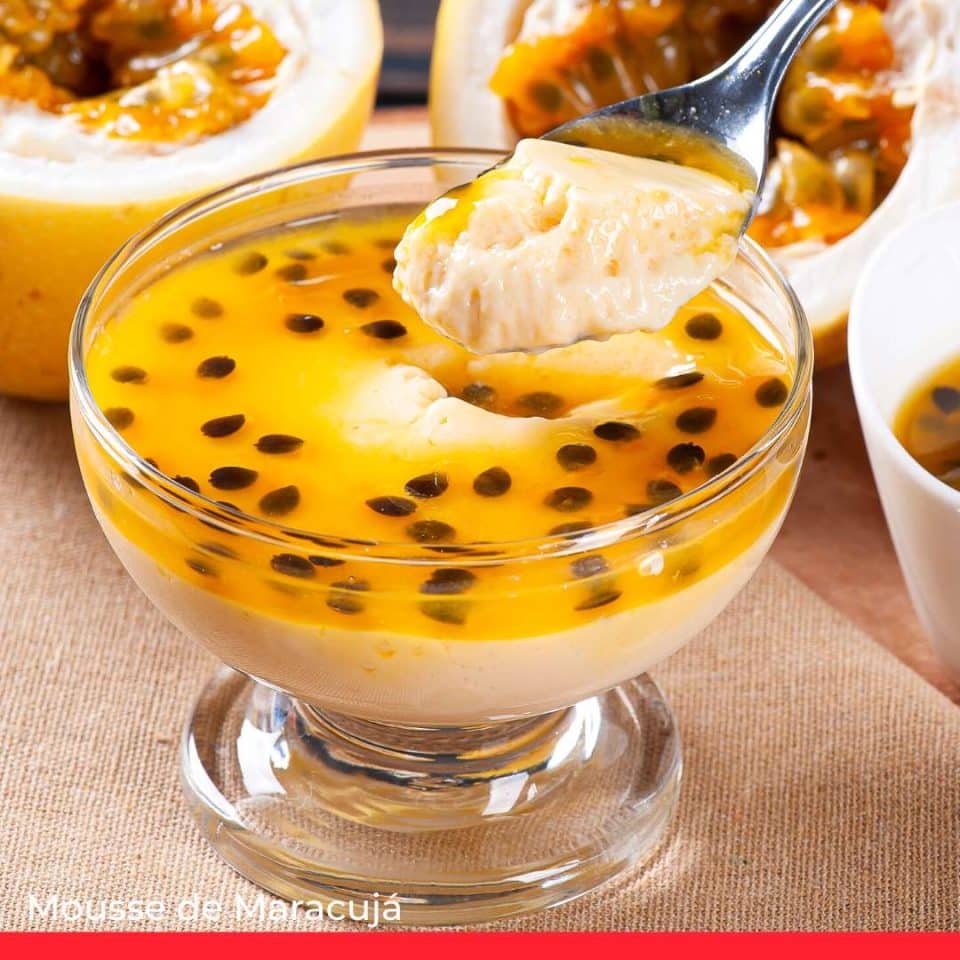
Mousse de maracujá is a traditional dessert served in all regions of Brazil. It not only has a distinct appearance – bright orange studded with glossy black tropical seeds, but also the distinct, citric flavor of the luscious passion fruit.
13. Ambrosia

The name Ambrosia comes from Greek mythology, where it was the food of the gods.
These days it’s also the name of a sweet made from milk and eggs that is served in the southern regions of Brazil. It is made by adding a sweet syrup of cinnamon and cloves to a pot of milk and slowly cooking the eggs, barely stirring at all, until they start to set.
The result is a dessert smoother than any French omelet, a dish that truly tastes divine!
14. Cocada

Cocada is a succulent sweet made from grated coconut, condensed milk, and sugar, cooked together at a low temperature. It can be served either hot or cold. The sweet taste lingers on the palate for quite a while, making it one of the most popular Brazilian desserts.
15. Creme de Cupuaçu
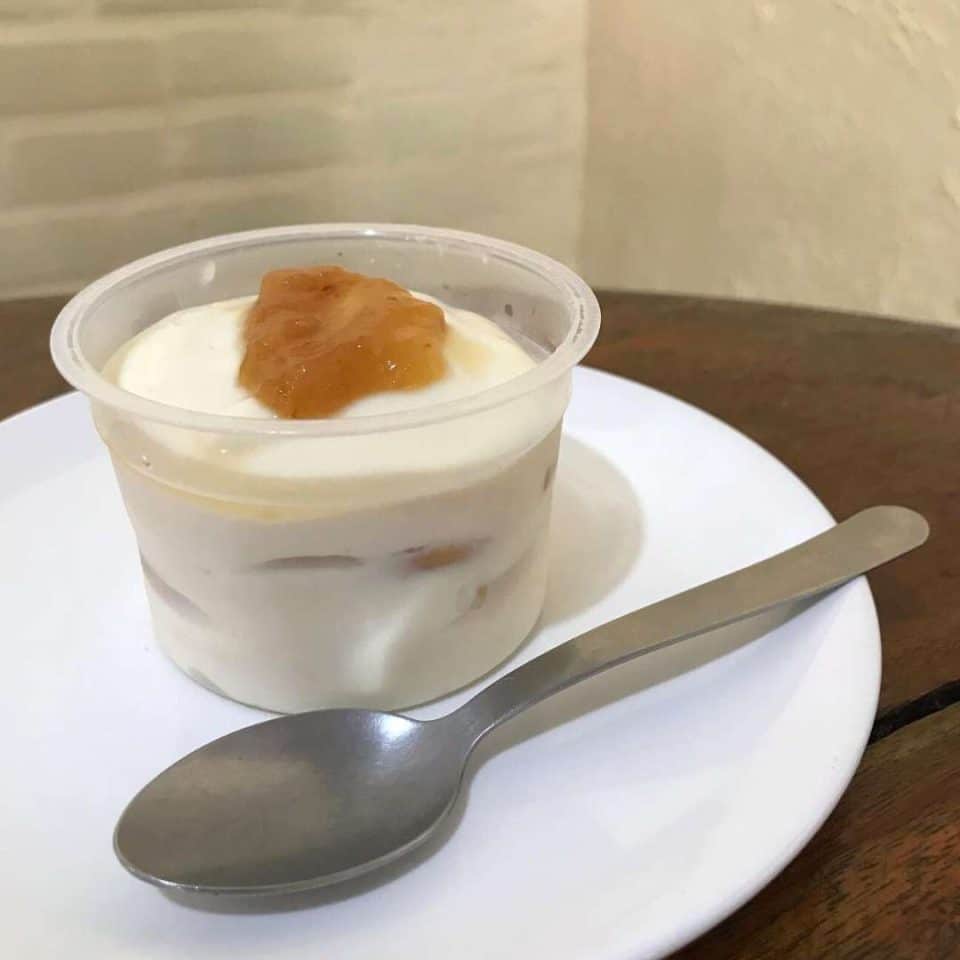
Cupuaçu is a fruit native to the Amazon rainforest that has a very distinct, strong and acidic taste. While too sour to be enjoyed on its own, it is the most popular choice throughout the country when used in sweet recipes.
By blending the fresh pulp of the fruit with cream and generous amounts of sugar, you get a refreshing sweet with light hints of citrus. Many people like to add cupuaçu cream to their açai, a mix called “Romeo and Juliet”
16. Bolo de Rolo

Guaranteed, this tastes as good as it looks! Bolo de rolo is a dessert, originally from the state of Pernambuco, that today is sold all over the country. It consists of a highly-sugared dough made of eggs and flour wrapped around layers and layers of melted guava. This delicacy is highly prized for its delicious flavor and mix of textures.
The city of Recife is so famous for its bolo de rolo that all friends and family expect to get one as a gift when you visit.
17. Acarajé

Looks can be deceptive, and while the acarajé might look quite innocent, this small, savory dumpling can be very spicy! The dough is made from string beans, onions, and garlic, fried together in palm oil to give it its characteristic taste and crunchiness.
The original recipe comes from Africa and was brought to Brazil by slaves. It is extremely popular in the northeast of Brazil, especially in the state of Bahia. Served with various spicy condiments and dried shrimps, the Acarajé vendors on Bahia beaches create an appetizing cooking smell that takes over the whole place!
18. Canjica

Canjica is a dessert made out of white corn. It is served hot in a bowl and is very sweet. Seasoned with cloves and cinnamon, you can’t call a festival a “Festa junina” if you don’t have a huge queue of people eagerly waiting for their canjicas.
19. Paçoca

Paçoca is a traditional candy made of peanuts, cassava flour, and sugar. You will always find it during festa juninas and in “Saint Cosmas and Damian” packages given to kids. Commercial paçoca is the most common given its convenience and taste, but there are also bakeries that sell home made paçocas.
The biggest difference between them is the dryness. The commercial paçoca makes your mouth extremely dry as you eat it, but a homemade paçoca is not so dry, making it easier to keep enjoying them – until your belly is full and your teeth hurt!
20. Cartola

Created in the northeast region of Brazil, cartola is a dish made out of fried bananas, a generous amount of butter, sugar, cinnamon, and the regional cheese “queijo coalho”, which develops an amazingly tender consistency when heated.
The dish is made of layers: the first layer is banana, then melted cheese is poured over the top, and finally a sweet syrup of butter and sugar is added for an unforgettable and uniquely Brazilian culinary experience.
21. Pudim de Leite ( Milk Pudding)

One of the most popular homemade desserts all over the country, the pudim de leite is pretty easy to make and is a sure success when serving to guests.
Its soft dough is made of condensed milk and eggs, slowly cooked in a water bath for about an hour until it achieves the perfect consistency. It is then topped with melted sugar, and, once it has cooled in the fridge, it is ready to serve.
The first bite of well-made pudding is unforgettable, and when the guests ask for the recipe, you’ll know the job is well done.
22. Pavê
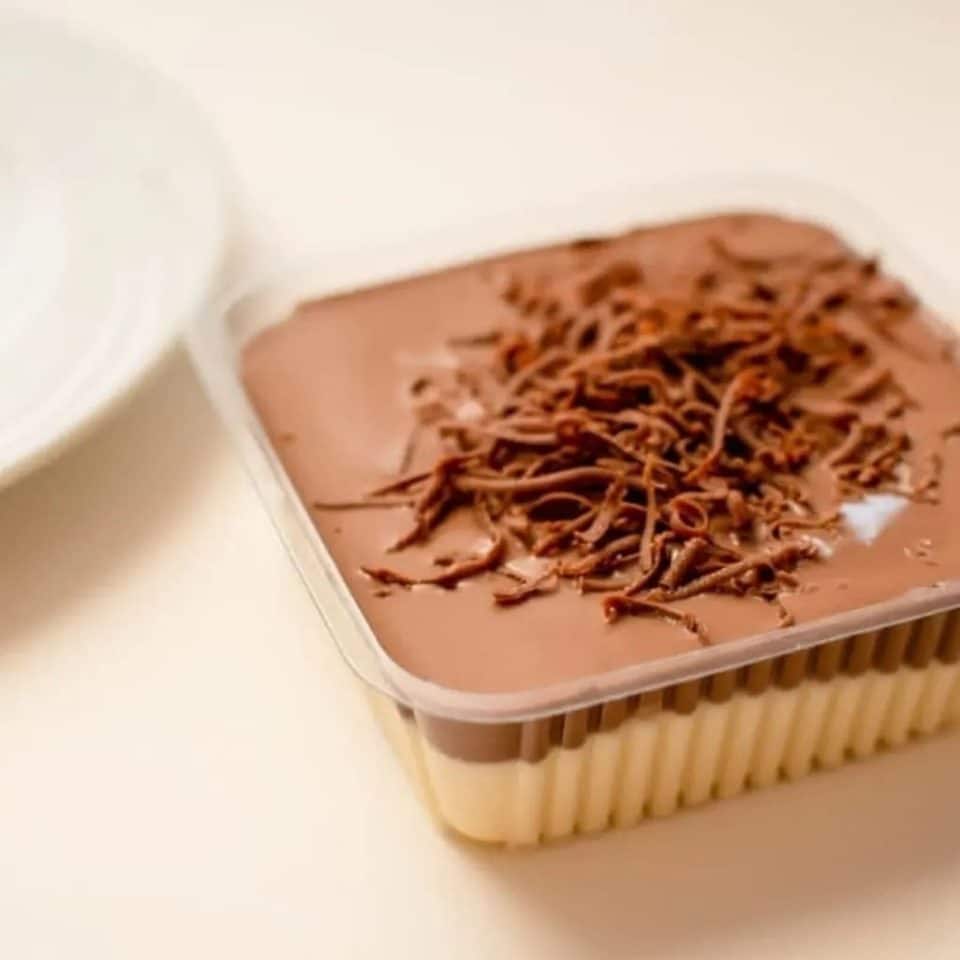
Pavê is a multilayered cake created with liquor-enriched sweet cream, crunchy crackers, and chocolate. It is typically served at Christmas and is the most coveted dessert of them all. You can’t call it a proper Brazilian Christmas without a mouthwatering pavê!
Traditionally, it is only served once someone recites the famous line, “É pa vê ou pa comê?” “Is this to be admired (Pa vê) or eaten?!”. The answer is clearly both- first admired, then devoured!
23. Doce de Buriti
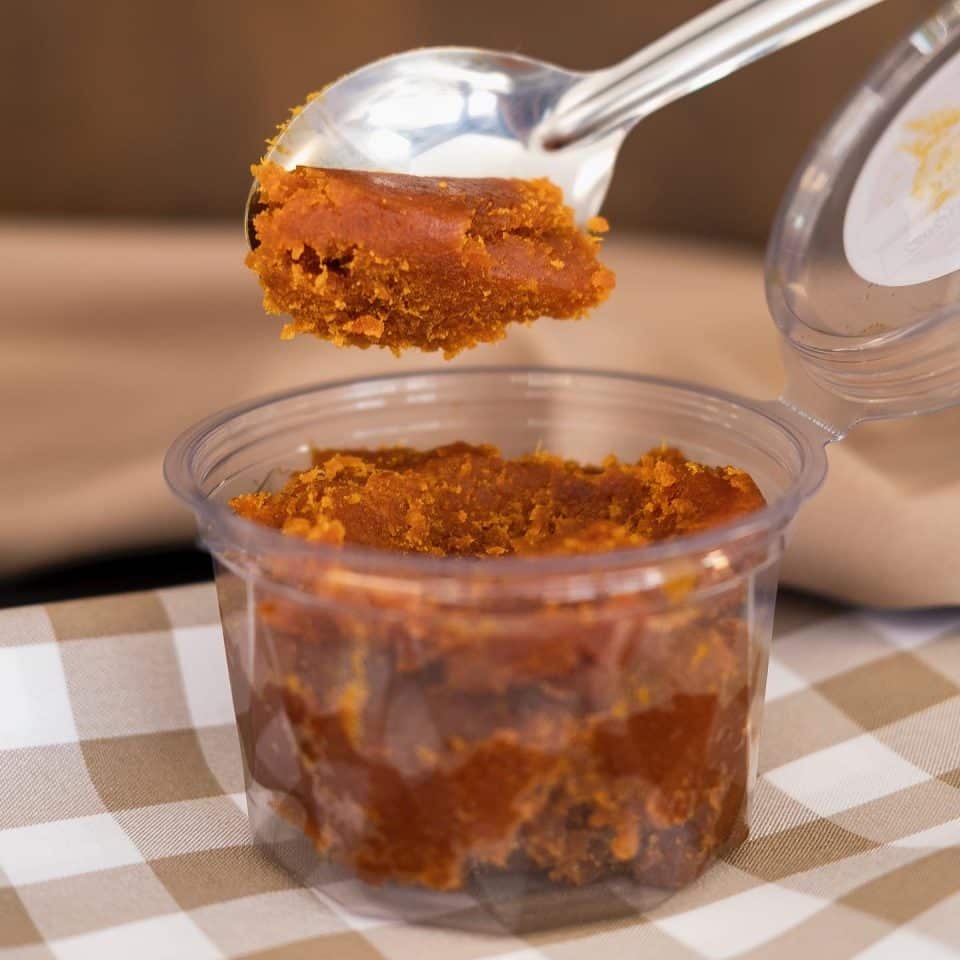
The buriti is a native fruit of the semi-arid lands of central Brazil. It has a characteristically sour taste that means it is not commonly eaten as a fruit, but regardless, it makes it the perfect addition to many recipes.
The traditional doce de buriti is made of fruit, sugar, ginger, lemon juice, a bit of garlic, and a hint of pepper. The result is a unique way to end a meal that manages to be sweet, sour, and bitter all in one bite.
24. Açai
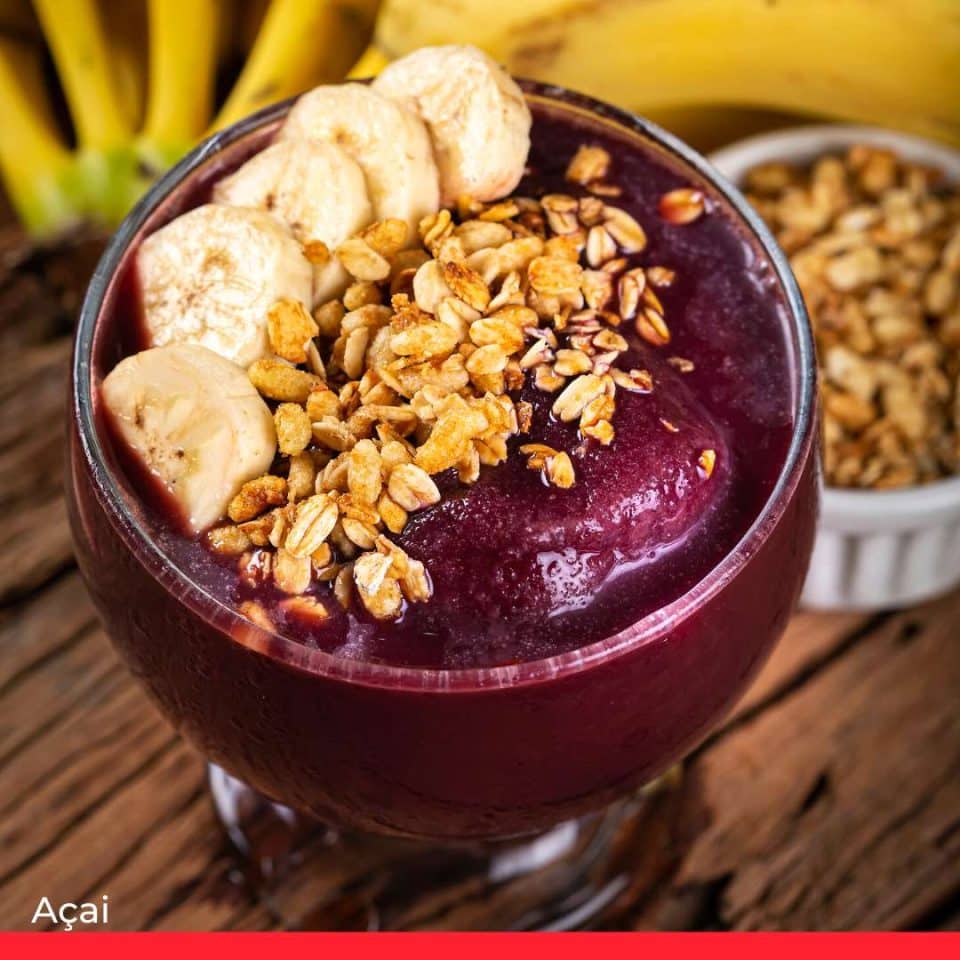
These days, açai is an acknowledged superfood, packed with nutrients. It is a favorite choice after high-intensity activities such as going to the gym, spending a day at the beach, or playing an energetic game of soccer.
It is served ice cold, with a texture that can vary from almost liquid, that you can drink from a cup, to a gooey purple paste that is eaten with a spoon. It is usually accompanied by pieces of banana and granola, turning it into an obscenely high energy meal containing up to 1,000 calories!
Açai has a notably bitter taste that can be too much for first timers without the addition of a little sugar. However, when the temperature goes up, Brazilians will tell you that there is nothing better than a cool bowl of açai to soothe the nerves.
25. Tapioca

Tapioca was made well before Portuguese colonizers came to the country. The name originated from the Tupis – an indigenous tribe native to the northern region of Brazil.
Tapioca is a white dough made from the manioc plant. It is served like a crepe, with fillings that vary from the traditional stick of butter to more elaborate fillings like cheese, ham, fruit jam, chocolate, or meat.
The tapioca doesn’t have much flavor on its own, but that is easily solved by adding one of many creative fillings. What makes it so popular is its unique consistency. It is at the same time a solid dough and a gummy paste, so it’s incredibly versatile and easy to turn into delicious desserts!
You’ll find tapioca on the breakfast menu at most hotels in Brazil, but is also sold all day long at small tapioca stalls in just about every city. Be careful though: the best stalls tend to have the longest queues!
26. Torta Alemã

Contrary to its name, Torta Alemã, or ‘German Cake,’ has minimal connections to Germany and its culinary traditions. It appears that the name was chosen by the cake’s creator, Sílvia Leite, as a tribute to her enjoyable travels through Europe. However, it is entirely a Brazilian cake, with its roots in Sao Paulo.
The cake is easy to make and it’s a popular Brazilian Christmas treat.
Did you find your favorite Brazilian dessert on our list? Share your suggestions for other Brazilian desserts that our community will enjoy trying in the comments below! We love to hear from you!
